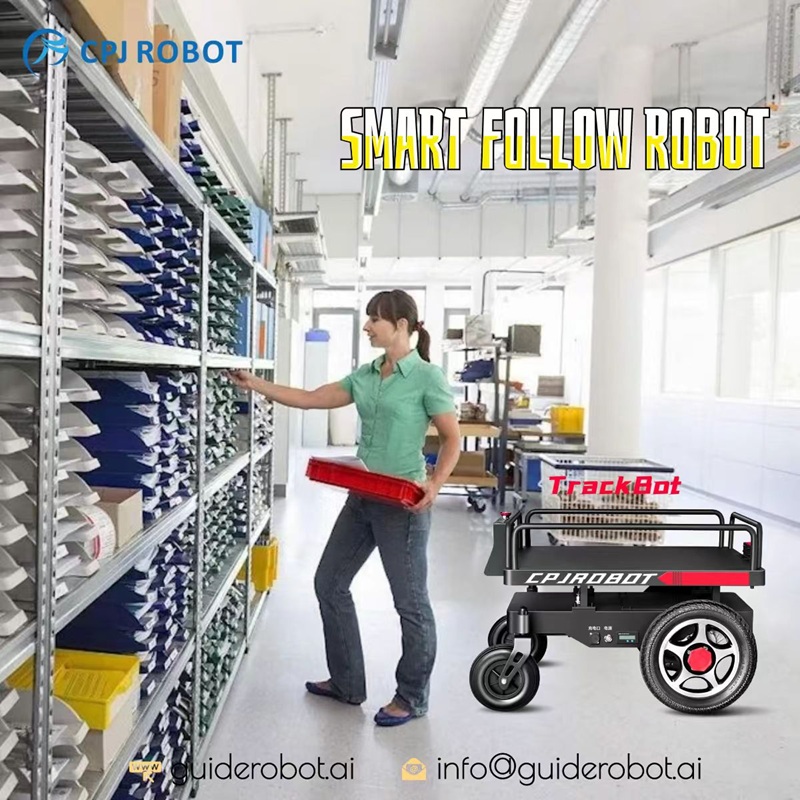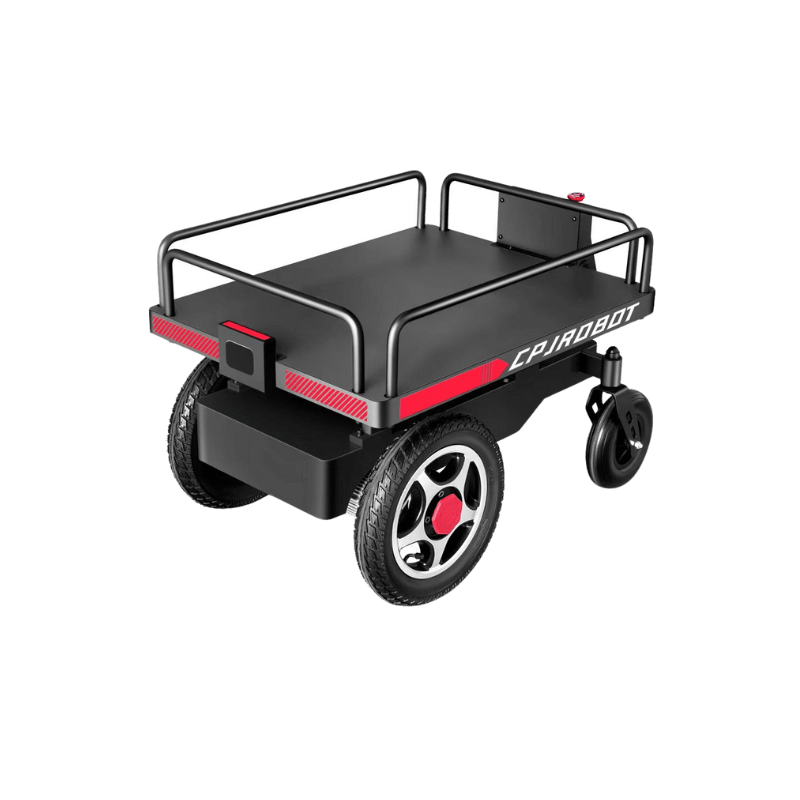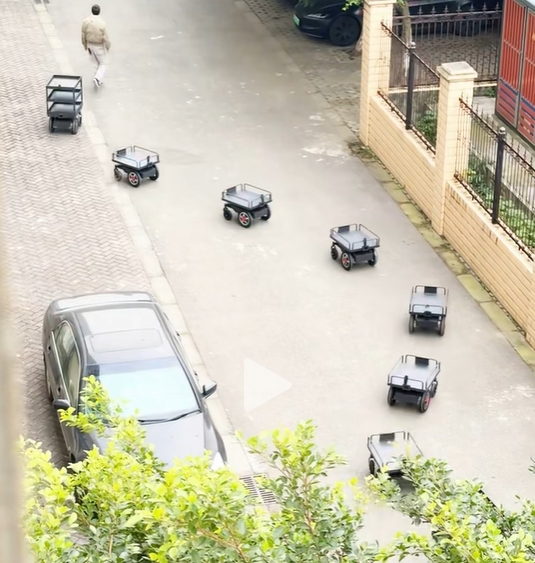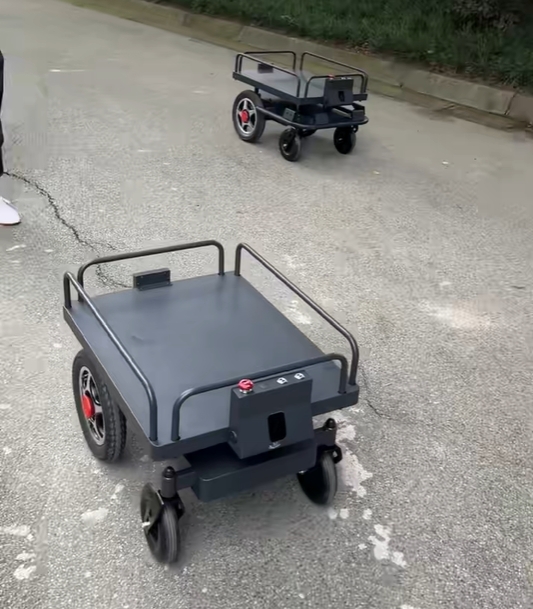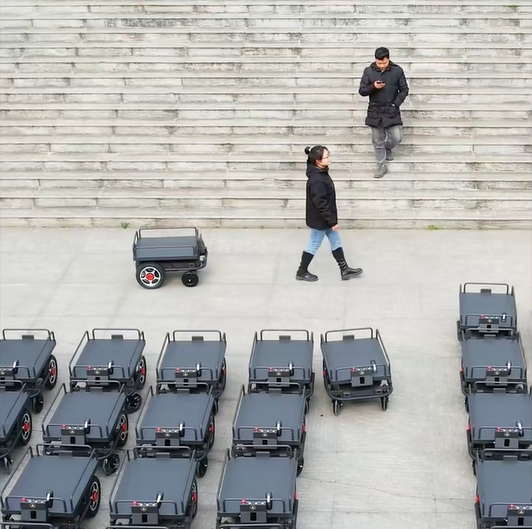As robotics technology continues to advance, robots are becoming an integral part of daily life. From delivery systems to service robots, their applications are expanding rapidly across various industries. However, before these robots can be deployed on a large scale, they must undergo rigorous testing to ensure they can operate safely and effectively in complex, unpredictable environments. One of the most critical features of autonomous robots is their ability to follow a target reliably—whether in a busy urban setting or a quiet rural area. This blog will explore how CPJROBOT’s autonomous follow robot performs in multiple real-world scenarios, focusing on its obstacle detection, adaptability, and overall efficiency.
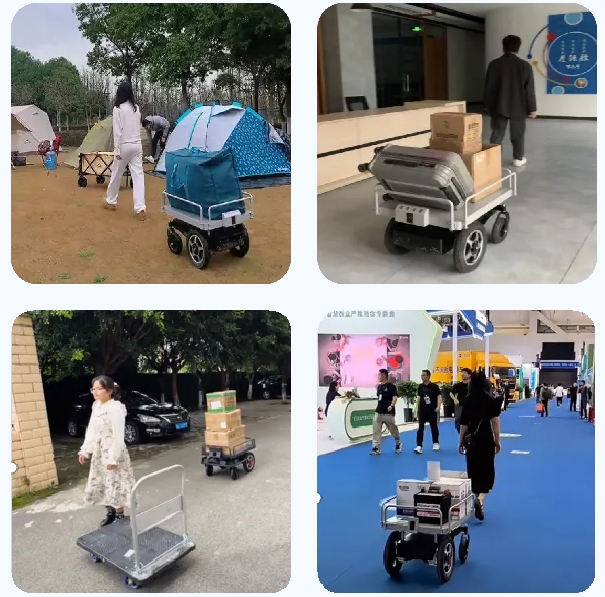
The Importance of Testing Autonomous Follow Robots
Before any robot can be deployed for practical use, its capabilities need to be tested in real-world conditions. For autonomous follow robots, this means being able to navigate unpredictable environments with obstacles, varying terrain, and human interaction. A particularly crucial feature to test is the robot’s automatic braking ability. If a person crosses the robot’s path, the robot needs to sense the obstruction and take the appropriate action—either slowing down or coming to a complete stop. Once the obstacle is removed, the robot must resume its task without losing its tracking ability.
Multi-Scene Testing: Real-World Environments
To thoroughly assess the capabilities of the autonomous follow robot, CPJROBOT conducted tests in four distinct scenarios, each with its own challenges and environmental factors. These tests help demonstrate the robot’s versatility and its ability to adapt to different settings.
1. Grassland Simulation: Agricultural Terrain
The first scenario simulates an agricultural environment, such as a farmland or orchard. The terrain in this scene is uneven, with grass and other natural features that can challenge a robot’s ability to follow a target smoothly. Despite these obstacles, the robot maintained a stable following pattern, even as the terrain shifted. The real test here was the presence of pedestrian obstacles. When a person unexpectedly crossed the robot’s path, it successfully slowed down and stopped. Once the person moved, the robot resumed its path and continued following without any loss of target or misdirected behavior.
2. Underground Parking Garage: Low Light and Complex Structure
Next, the robot was tested in an underground parking garage—an environment with complex layouts, poor lighting, and potential hazards like parked vehicles. In these conditions, the robot’s obstacle avoidance and low-light performance were put to the test. Thanks to its advanced LiDAR technology and dynamic path planning, the robot was able to detect and avoid obstacles while maintaining a smooth following motion. The lack of light did not hinder its ability to identify and follow the target, proving the system’s robustness in dimly lit spaces.
3. Residential Area: Dense Vegetation and Pedestrian Traffic
The third scenario simulated a busy residential area with dense vegetation and pedestrian traffic. This environment posed an additional challenge: dynamic obstacles in the form of pedestrians moving unpredictably. The robot was able to maintain focus on its target even as pedestrians crossed its path. Using its sensor array, the robot seamlessly avoided collisions while continuing to follow the target without missing a step. This test demonstrated how the robot could perform well in environments with both moving and stationary obstacles, further showcasing its reliability in urban settings.
4. Highway: Busy Traffic and Wide Open Roads
Finally, the robot was tested on a simulated highway scenario with moving vehicles. This scenario was designed to assess the robot’s performance in a high-speed, high-traffic environment. The robot needed to keep up with a moving target while navigating around various obstacles. The results were impressive—despite the challenges posed by fast-moving vehicles, the robot was able to maintain a steady pace and follow the target without losing its bearings. The high-performance motors and robust LiDAR sensors allowed the robot to perform flawlessly, even in high-speed scenarios.
Multi-Mode Following: Adaptability in Different Movement Patterns
In addition to its ability to follow a target in diverse environments, CPJROBOT’s autonomous follow robot can also adapt to various movement patterns. The robot was tested under six different modes of following to simulate different types of movement that might occur in real-world applications.
- Figure-Eight Follow: This mode simulates a more complex path, testing the robot’s ability to adapt to circular or unpredictable movement patterns.
- Accelerated Follow: The robot was tested to follow a target that was moving at increasing speeds, ensuring it could keep up with fast-moving objects.
- Decelerated Follow: The robot successfully followed a target that was slowing down, adjusting its speed to maintain an appropriate distance.
- Stationary Turn Follow: This mode tested the robot’s ability to follow a stationary target as it rotated in place, examining its tracking precision.
- Circular Follow: The robot followed a target moving in a circular pattern, further showcasing its versatility in various directional movements.
- Straight-Line Follow: The robot was able to follow a target along a straight path with precision, maintaining a consistent distance throughout.
The robot demonstrated impressive performance across all these modes, adjusting its speed, direction, and movement in real time based on the target’s behavior. This flexibility ensures that the robot can be used in a variety of real-world tasks, from warehouse logistics to personal assistance.
Multi-Target Following: Handling Multiple Individuals
One of the most interesting features of CPJROBOT’s follow robot is its ability to track multiple targets simultaneously. In the multi-target test, six individuals with different body types, movement patterns, and clothing were used as targets. Despite the differences in appearance and movement, the robot successfully tracked each individual, demonstrating its capability to differentiate between multiple targets.
This feature is particularly useful in environments like factories, hospitals, or shopping malls, where the robot may need to follow different people at the same time. Whether it’s following staff members in a warehouse or assisting customers in a retail store, this ability ensures that the robot can handle dynamic, crowded environments.
The Key Advantages of CPJROBOT’s Follow Robot
Beyond its excellent tracking capabilities, CPJROBOT’s autonomous follow robot also demonstrates remarkable passability and endurance. It can handle diverse terrain types, from rough grasslands to slick parking garages, and perform consistently in varying environmental conditions.
Moreover, the robot features high-performance human-machine interaction, making it safe and stable for long-duration tasks. It is built for extended periods of operation, making it ideal for a range of applications that require constant tracking and assistance.
Conclusion
The CPJROBOT autonomous follow robot represents a significant leap in robotics technology, combining cutting-edge sensors, advanced path planning, and human-like adaptability. Whether it’s navigating complex urban environments, following a target through dynamic terrain, or handling multiple individuals, this robot proves that autonomous systems can be reliable, efficient, and versatile.
As robotics technology continues to evolve, we can expect to see more applications for autonomous follow robots in industries such as logistics, healthcare, and retail. The ability to interact safely and efficiently with humans and adapt to different environments will make these robots an indispensable tool in the future of automation.
Are you interested in integrating autonomous robots into your operations? CPJROBOT specializes in LiDAR and intelligent robot manufacturing, providing customized solutions for your business. Contact us today to explore how our innovative technology can transform your workflows and boost productivity.
